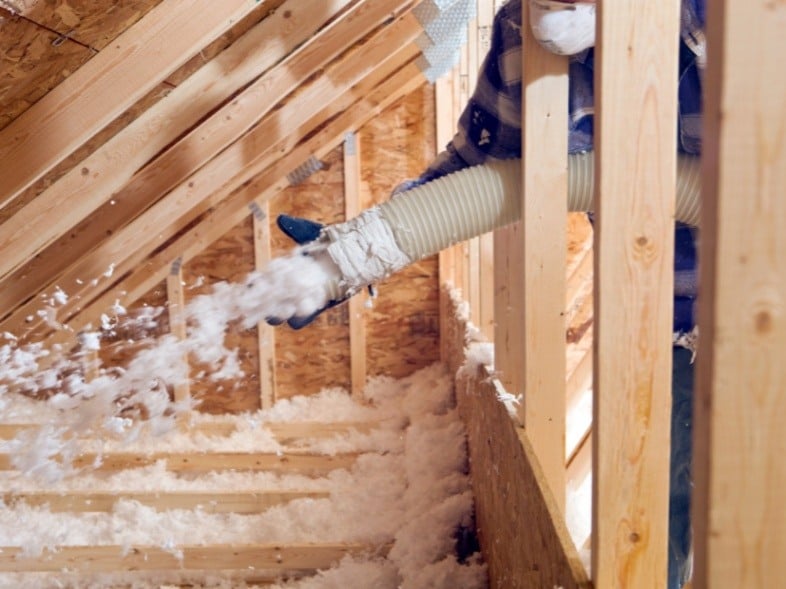Search for topics or resources
Enter your search below and hit enter or click the search icon.
August 21st, 2024
2 min read

You’re seriously considering blown-in insulation for your project. Still, you want to cover all of your bases before you commit. Does blown-in insulation offer a vapor barrier? If not, would your project even need to protect from vapor transfer?
South Central Services has insulated hundreds of new and existing homes near Chambersburg, Martinsburg, and Hagerstown. We are sought after for our expertise in insulation and energy efficiency in buildings. In our climate zone, vapor barriers are an essential topic of conversation for buildings and their functionality.
By the end of this article, you’ll understand:
Don't have time to read right now? Check out everything you need to know at a glance.
Blown-in insulation products cannot create vapor barriers. Whether the insulation is blown-in fiberglass or blown-in cellulose, there is no way to create a vapor barrier with loose-fill insulation. The properties of cellulose and fiberglass differ, but those differences do not extend to stopping vapor transfer.

A vapor barrier stops the transfer of water in its gaseous state. Vapor barriers are ineffective for liquid water, but they can prevent water content in the air from leaking. Since blown-in insulation cannot even stop air leakage, there is no way for blown-in to prevent vapor transfer on its own.
Vapor barriers are created by other materials, such as liquid-applied membranes, closed cell spray foam, and thick plastic sheathing. For a material to qualify as a vapor barrier, it must prevent vapor from permeating at a certain level.
 The nature of blown-in insulation limits its application to attics. Blown-in will be installed in an even layer on the attic floor of a house or pole building. Blown-in cannot stick in the ceiling of an attic or the walls of a structure.
The nature of blown-in insulation limits its application to attics. Blown-in will be installed in an even layer on the attic floor of a house or pole building. Blown-in cannot stick in the ceiling of an attic or the walls of a structure.
Dense pack insulation has more versatility and is sometimes confused with blown-in. Dense pack tightly condenses loose-fill insulation into wall or roof cavities. With the assistance of netting, the loose-fill product can be installed in a wall or ceiling cavity.
While dense pack may be more versatile that blown-in insulation, dense pack also cannot create a vapor barrier. When installed correctly, dense pack can deliver an airtight seal but cannot prevent vapor transfer.
The good news is that blown-in insulation should not need a vapor barrier. Blown-in is primarily used on the attic floor, and vapor barriers are not a concern for attics in our climate zone.

In south central PA and other parts of Climate Zone 5, above-grade places do not have to worry about vapor transfer. It is below-grade places like basements and crawl spaces where vapor barriers are vital.
Blown-in insulation should never be used in a basement or crawl space. Even dense pack, which could reasonably be installed in exterior walls or ceilings above-grade, would not be installed in a basement or a crawl space.
Other climate zones may have different concerns for vapor transfer due to different weather conditions and seasonality.
Blown-in insulation cannot create a vapor barrier, but this is not a significant concern in our climate zone. Blown-in insulation is only used in attic floors, which are above-grade spaces. Around southern Pennsylvania, blown-in can be used in an attic application without any concerns of vapor transfer.
Now that you understand the relationship between vapor barriers and blown-in insulation, your next step is to:
Disclaimer: While we strive to publish information accurate to building science, local building codes and standards supersede our recommendations.
Alexis has been fascinated by spray foam insulation since 2018. When she isn’t thinking about insulation, Alexis is geeking out over storytelling and spreadsheets.
Topics: